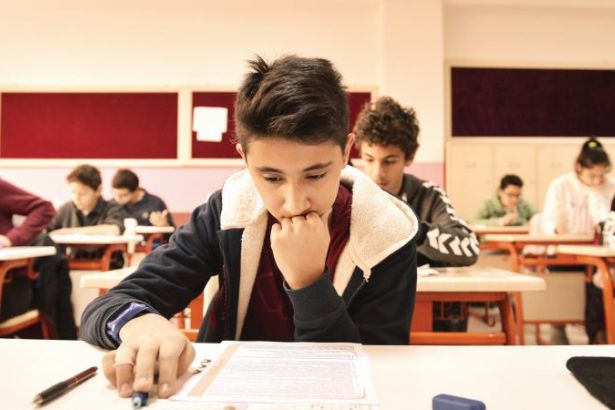Ministry report reveals Turkey’s educational downfall

Turkey’s Ministry of Education (MEB) issued a report on the Statistics of Formal Education. Revealing that preschool education has been discarded, schooling rate has dropped, the way has been paved for child labour, and religionisation has increased in education, the statistics were interpreted and criticised by the Education and Science Workers’ Union of Turkey (Eğitim-İş).
The statement of Eğitim-İş first indicates that the basis was set for a social structure in which the future of the country is determined not by reason, science, and arts, but by dogma, superstition, and various faiths in 2012, when the ruling AKP party introduced a new educational system called “12-year compulsory education” (shortly, the “4+4+4” system), which brought along numerous pedagogical, psychological, social, economic, and educational problems.
Several of the points underlined by the statement are as follows:
- The facts that the compulsory primary education was drawn back one year, and preschool education was left out of compulsory education, have shown their negative effects on children’s development and education. While the schooling rate for the 5-year-old was 65,69% in the 2011-2012 academic year, it dropped to 39,72% in 2012-2013 and reached 42,54% in 2013-2014 due to the fact that the schooling age was brought from 66-month-old to 69-month-old. 58,79% of the 5-year-olds had preschool education in 2016-2017, and it reached only 66,88% this year. The preschool education rate has regressed after the 4+4+4 system.
- A decrease was evident in schools, teachers, and students in preschool education since the preschool-age children were forcefully enrolled in primary schools. The number of preschool education institutions was 28,625 before the 4+4+4 system in 2011-2012, but it dropped to 27,793 in 2015-2016. It went only slightly higher in 2017-2018: 31,246.
- The statistics show that the schooling rates in primary school and middle school have also dropped. The rate was 99,57% for primary schools in 2013-2014, while it has dropped to 91,54% this year. The schooling rate for girls was 99,61% in 2013-2014, but it dropped to 91,68%. Schooling rate for middle schools was 95,68% last year – however, this year it decreased to 94,47%.
The statement also highlighted that the number of students per classrooms is still high, especially in immigrant-receiving cities.
It was also stated that the educational policies of the AKP government for technical-vocational high-schools have led to an increase in child labour. Shaping these schools according to the needs of the private sector for qualified and cheap labour, the government’s policies caused an increase in technical-vocational high-schools, where students are used as a source of cheap labour right from the beginning.
The report of the ministry also shows that the educational system has been formed depending on the demands of the capitalists, which resulted in much higher numbers in private schools. While there were 4,664 private schools where 535,788 students studied before the 4+4+4 system in 2012, the numbers went up to 9,555 schools and 1,204,963 students last year, and to 11,694 private schools and 1,351,712 students this year. The number of private schools has tripled compared to the 2011-2012 academic year.
The educational policies have gone hand in hand with the religious fundamentalist approach of the government. According to the statistics by the MEB, the number of religious vocational middle schools was 1,099 in 2012-2013, which increased to 2,777 last year, and has reached 3,286 this year; the number of religious vocational high-schools, on the other hand, was 708 in 2012-2013 but went up to 1,408 last year, and 1,605 this year.
The number of students who went to religious vocational schools in 2002 when the AKP came to power was 71,100. However, the number for the middle school students has reached 723,108, for high-schools it has become 627,503 – 1,291,426 when combined! The number of teachers working at religious vocational middle schools has increased from 31,530 to 39,536, which is curious since it is known that many teacher candidates are waiting for an appointment for years, and teachers of various branches have committed suicide or died working at other professions because they could not perform their own.
The statistics also reveal that many students are forced to go to open high-school. It is shown that, while the number of students who went to open high-school before the 4+4+4 system in 2012 was 940,268, it has reached 1,395,621 this year. Moreover, the number of girls who go to open high-school has increased from 541,408 last year to 582,549 this year. The statement maintains: “Girls are forced out of the formal educational system by the 4+4+4 system. The picture is a clear indicator that compulsory education has been reduced to 4 years, practically.”
When the law number 6287 (the one that brought the 4+4+4 system) was being prepared, one of the most significant justifications was that because of the 8-year continuous education, many schools in villages had become dysfunctional, that the physical conditions were insufficient, and that it was equal to torment students to force them to travel long hours from villages to the nearest schools by the assigned shuttle vehicles. Besides, that problem was attested to have resulted in giving an alibi to the families who did not allow their daughters to attend schools that far away. However, “mobile teaching” has increasingly continued in 2018: While the number of students who were carried from distant settlements to central schools was 801,708, this number has never decreased but fluctuated in an increasing manner in the following years, only to reach 810,035 in 2018.



